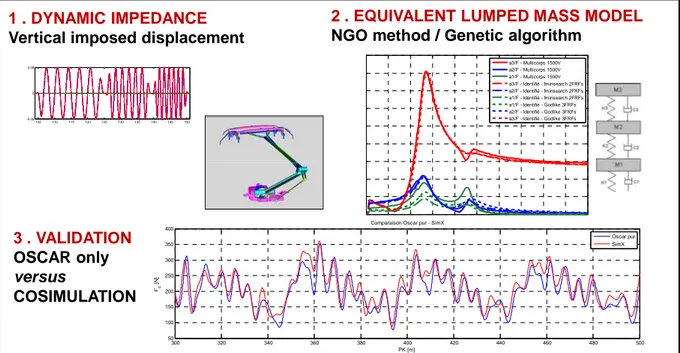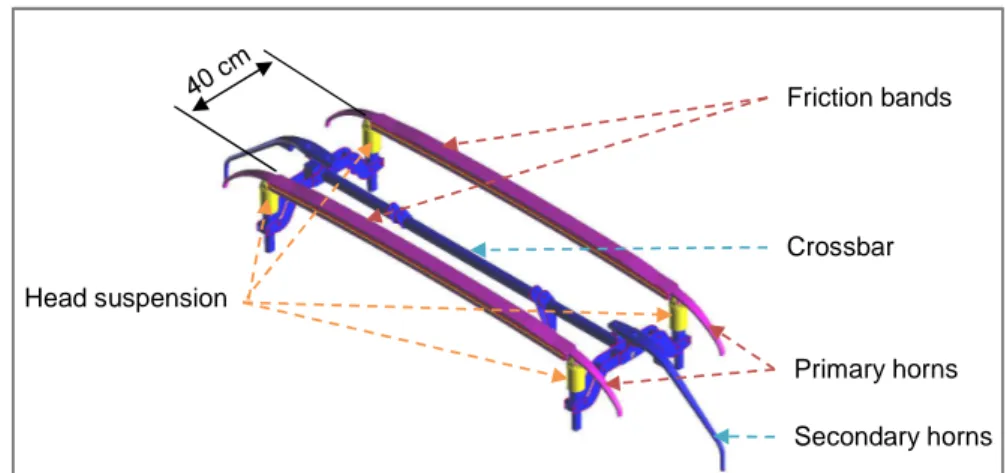Pantograph catenary dynamic optimisation based on advanced multibody and finite element co-simulation tools
Texte intégral
Figure

![Figure 3 - Three first vertical modes of the pantograph in the [0,20Hz]](https://thumb-eu.123doks.com/thumbv2/123doknet/7391742.216510/3.892.121.781.297.528/figure-vertical-modes-pantograph-hz.webp)


Documents relatifs
Figure 2d, shows the evolution of the intensity of such Bragg peaks, which vanishes at 142 K and characterizes the temperature above which the spin-state concentration wave,
Applying policies on round-trip carsharing supply systems, this paper studies the implementation of an availability- based dynamic pricing (ABDP) strategies: a diversification of
It presents a novel generic model facet for representing risk analysis and fault tree propagation in an agent model, where the goal is to simulate the behavior of a system in normal
This article is organized as follows: Section 2 gives discussions of related work; Section 3 introduces the structure of the preliminary personalized senti- ment model and the
29 shows the domain defined over an unstructured mesh grid and the extended finite element solutions u h of the Laplace problem obtained on this im- plicit representation with
This is due to the fact that if the dataflow between D and the FIFO buffer is active, no other dataflow can happen at the same time and the waiting time of requests at node A
Since not every initial population size combination is favorable regarding the ecosystem’s survival, and some combinations have only a partial success rate, a second series
The peak at β = 0.4 correspond to the particular pantograph velocity v panto at which the span passage temporal frequency f span = k span · v panto coincides with the first group



